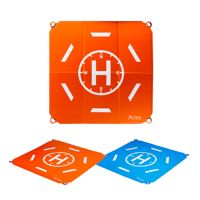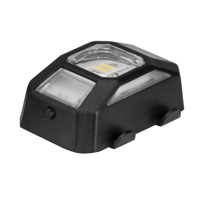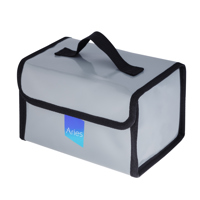
Picture does not represent the actual item
See what's in the box
This item is no longer available.
Review Summary
8.8 lbs (4kg)
58 mph / 94 km/h
19.7 ft/s / 5 m/s
29.5 ft/s / 9 m/s
8200' (2499.4m)
27 Minutes
40 Degree
+/-1.64' (0.50m) Vertical with GPS
+/-4.92' (1.50m) Horizontal with GPS
Downward, Forward
32.8 ft/s / 10 m/s at 6.56' / 2 m
33' (10m)
2.3 to 98.4' (0.7 to 30.0m)
60 Degree (Horizontal)
54 Degree (Vertical)
Surface with Clear Patterns at >15 lux
0.0 to 16.4' (0.0 to 5.0m)
5 Degree (Vertical)
21 MP
f/2.8
100 to 25,600
100 to 6400
8 to 1/8000 Second
8 to 1/1000 Second
JPEG, DNG
Burst Shooting
14 to 104 Degree F (-10 to 40 Degree C)
3 (Pitch, Roll, Yaw)
Pitch: -125 to 40°
Roll: -20 to 20°
Pitch: 180 Degree /s
Roll: 180 Degree /s
Yaw: 360 Degree /s
Lithium-Ion Polymer (LiPo)
Required, included
2
Non-universal
4280 mAh / 97.58 Wh
6 S / 22.8 V
1.1 lbs (0.5kg)
26.1 V
180 W
4
14 to 104 Degree F (-10 to 40 Degree C)
Without Propellers: 23.8" (60.5cm)
7.25 lbs (3.29kg) (Including Battery)



The Inspire2 X7 Standard Kit is designed to meet the requirements of professional film shooting, providing high-quality aerial picture quality and long battery life. This kit also features a CinemaDNG & Apple ProRes Activation Key.
Inspire 2: Power Beyond Imagination
The Inspire 1 was a revelation. The first filmmaking drone in the world to integrate an HD video transmission system, 360 Degree rotating gimbal and a 4K camera, as well as the simplicity of app control. The launches of the Zenmuse X5 and X5R cameras further cemented the Inspire as a critical tool for filmmakers around the globe.
The Inspire 2 takes everything that was good about the Inspire 1 and improves it. An all-new image processing system records at up to 5.2K in CinemaDNG RAW, Apple ProRes and more. It goes from 0 to 50mph (80kph) in just 5 seconds and hits a maximum speed of 58mph (94kph) and has a max descent speed of 9m/s for unheard of speed and agility in an aircraft this size. A dual battery system prolongs the flight time to a maximum of 27 minutes (with an X4S), while self-heating technology allows it to fly even in low temperatures.
FlightAutonomy has been revised and developed specifically for the Inspire 2, providing two directions of obstacle avoidance and sensor redundancy. Increased intelligence adds multiple intelligent flight modes, including Spotlight Pro, giving even single pilots the ability to create complex, dramatic shots. An upgraded video transmission system is now capable of dual signal frequency and dual channel, streaming video from an onboard FPV camera and the main camera simultaneously, for better pilot and camera operator collaboration.
Aircraft
Structure
Magnesium aluminum composite shell and transforming design, carbon fiber arms.
Configuration
Vision sensing, 2-axis FPV camera, range of supported cameras.
Propulsion
58mph (94kph) max speed, 2kg thrust per rotor, 15in props, maximum 27min flight time (with X4S).
Battery
Dual battery, self-heating, battery redundancy, 98Wh.
Image System
Image Processing
Image Processing and storage: 5.2K@4.2Gbps RAW video recording, Cinecore 2.0, integrated DJI CINESSD.
Video Format
CinemaDNG and Apple ProRes 5.2K video support, H.265 and H.264 video codec support, 4K video at 100Mbps. Recorded video can be stored simultaneously on the DJI CINESSD and a Micro-SD card.
File System
FAT32/exFAT universal file system.
Efficient Workflow
The Inspire 2 creative workflow has been completely optimized and is now capable of recording video in CinemaDNG and Apple ProRes, and other common formats for post-production in filmmaking. Also supported are FAT32/exFAT file systems, which allow fast copying of files direct from the CINESSD without additional software.
Sense and Avoid
Forward and downward vision systems enable the Inspire 2 to detect obstacles up to 30 meters ahead, allowing for protected flight at up to 34mph (54kph) at a controllable attitude angle of 250 Degree. Upward facing infrared sensors scan obstacles 16ft (5m) above, adding protection when flying in enclosed spaces. Obstacle sensing systems are active during normal flight, RTH and all Intelligent Flight Modes. These sensors are core components of the DJI FlightAutonomy system, which brings the below intelligent features to the Inspire 2:
• Upward Infrared Sensors
• Accurate indoor hovering and positioning
• Automatic obstacle avoidance during RTH
• Terrain detection
Spotlight Pro
Spotlight Pro is a powerful tracking mode that allows even single pilots to capture complex, dramatic images. It uses advanced visual tracking algorithms to lock onto a subject during flight, regardless of the direction that the Inspire 2 flies, creating shots that would once have required a dedicated camera operator. If the gimbal comes close to reaching its rotation limits, the Inspire 2 itself will rotate in the same direction without affecting flight control or the shot being captured to free up gimbal movement.
It has two shooting modes, Quick Mode and Composition Mode
In Quick Mode, select an object to begin tracking. In Composition Mode, select the subject and the tracking position. When the subject enters the preset tracking position, press the shortcut to begin tracking. The gimbal can be moved during shooting for composition adjustments. Spotlight Pro is available in all Intelligent Flight Modes including ActiveTrack, TapFly, Waypoint and Point of Interest. Intelligent Flight Modes
Intelligent Flight Modes
In addition to Spotlight Pro, a range of other intelligent flight and shooting modes are available. Obstacle avoidance is optimized when using Point of Interest and Waypoint modes, making complex shots simple and repeatable. Also available are QuickSpin, TapFly and ActiveTrack, to simplify challenging shots.
TapFly
The 2-axis onboard FPV camera separates the flight view from the main camera view, effectively giving the Inspire 2 a dedicated TapFly camera. Tap a point onscreen in the FPV view to set a flight route and the Inspire 2 will automatically fly along that route, leaving the pilot to focus on gimbal movement.
Active Track
The ActiveTrack Mode allows the Inspire 2 to recognize a range of objects, from people to bikes to cars to boats. Tracking profiles that can be adjusted based on the subject being tracked means greater tracking precision.
Smart Return to Home
Forward and downward vision systems allow the Inspire 2 to create a real-time map of its flight route as it flies. If the video transmission system signal is lost and Smart Return Home is enabled, it is able to fly home along its original route, and change to a straight line when it regains a signal. As it returns, it will use the primary camera to identify obstacles as far as 200m in front, allowing it to plan a safe route home. It is also able to reconnect more quickly after losing connection.
Optimized Transmission and Control System
The latest update to DJI Lightbridge technology has an effective transmission distance of up to 4.3mi (7km) and is capable of delivering both 1080p/720p video as well as the FPV view to pilot and camera operator. Users can also switch between 2.4GHz and 5.8GHz control frequencies to cut through noise for greater signal stability.
Master and Slave Controllers
A new wireless HD image transmission technology sends video information from the master controller to the slave controller and the two controllers can be up to 100m apart without loss of image quality.
Broadcast mode
Broadcasters can broadcast direct from the Inspire 2 using its dedicated 1080i50 and 720p60 transmission signal. Aerial live-streaming direct to TV is as simple as connecting the Inspire 2 remote controller to the satellite truck.
Powerful Flight Performance
A new propulsion system optimized for power creates a new level of flight performance. The Inspire 2 flies at up to 58mph (94kph) descends at 9m/s and climbs at 6m/s. It can accelerate from 0 to 50mph (80kph) in just 5 seconds and flies at a max attitude angle of 40 Degree.
The two controller sticks are tuned for more sensitivity, making delicate maneuvers easier. More power also allows the Inspire 2 to fly in more extreme conditions, including over 2500-5000m above sea level (using optional dedicated propellers), and in temperatures as low as -40F (-200C) using self-heating Intelligent Flight Batteries.
Increased Reliability
Reliability has been further enhanced through dual redundancy of key modules such as the IMU and barometer. The intelligent flight control system monitors the redundancy system, giving it accurate flight data. The new obstacle sensing system helps the Inspire 2 sense and avoid obstacles, minimizing the risk of collision.
Dual batteries mean that if a problem occurs on one battery the other is able to continue flight long enough for a safe landing. At the same time, the Inspire 2 propulsion system is driven a PWM signal with serial port signal redundancy so that if PWM signals are lost, transmission will continue through the serial port.
This propulsion system has been tested for thousands of hours to ensure reliability, when combined with key sensors and a dual-battery design, overall flight reliability is significantly enhanced.
Cendence Remote Controller
Dials, Levers, and Knobs
The two knobs on the front panel control gimbal pitch and yaw, and the right/left levers and Focus Adjustment Knob are used to tune flight controller settings and the gimbal camera in real-time, allowing you to pull focus and set aperture.
Camera Settings
For quick camera adjustments, you can customize several shortcut buttons for particular groups of settings, or save frequently used settings.
Custom Control
Customizable buttons can quickly enable or disable frequently used functions like focus peaking, color waveform, obstacle avoidance, and home point resetting, or close warnings and tips midflight, all without using an app.
Button Combinations
Rotate the dials or the toggle the right/left levers while holding certain buttons to control gimbal roll, shutter speed, aperture, or ISO.
Detachable Design, CrystalSky Compatibility
The CrystalSky monitor mounts to the Cendence remote controller via the Cendence Monitor Mounting Bracket.
The Cendence remote controller's antennas, PCB, mounting bracket, and battery are all detachable, making its hardware easily upgradable, allowing you to customize the controller for compatibility with future DJI aircraft.